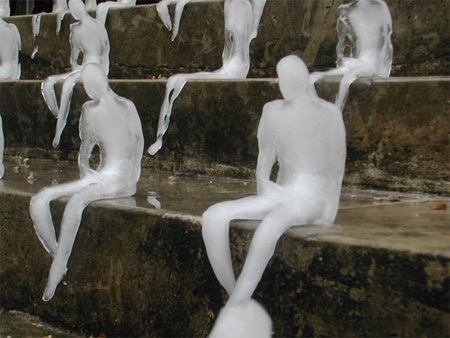Snow and ice spell trouble, maybe danger, probably extra work, and certainly limits to mobility. Hardest hit won’t be those who live in snow country and are used to it, but those who live in the marginal areas that rarely get snow or ice. Overcoming the inconveniences of snow requires preparation. This series of posts provides checklists to help you create and prepare for a better winter experience. The posts in this series are: Universal Design for Winter, Preparing For Winter, Snow Removal, Getting Around, and, New Home Construction.
Universal Design for Winter
Universal design is about having things work for the widest range of people within all ages, young to old, and all abilities, able-bodied to living with a disability. The playing field levels a bit when it comes to winter’s snow and ice, as even an able-bodied person will encounter survival challenges.
The primary threat presented by snow and ice is to mobility. As intelligently and inclusively as we design our environments, nature can still out-do us reminding us to be humble, thoughtful and prepared. The other danger is complacency. For 99% of the time, our stuff works; if milk runs low, we go to stocked shelves and buy more. However, snow and ice can make this task difficult if not impossible. That’s often the first time we notice our complacency and wish we had stocked up with a supply of powdered milk.
A lack of any one item doesn’t usually do us in, but it usually isn’t just one item, it’s a combo. It’s not just the milk that’s low, it’s cupboards that have little food at all. It’s a prescription drug with just a two-day supply. It’s a gas tank that’s empty. It’s a home design that creates excessive maintenance or even impedes your exit. The cumulative effect is what makes the simple complicated in winter.
Can universal design apply to snow and ice?
The Center for Universal Design’s seven principles can and do: equitable, flexible, simple and intuitive, perceptible information, tolerance for error, low physical effort, and ample size space for approach and use. Perform an evaluation; consider each in a snow and ice emergency. Will all roads be open? Probably not, larger roads and emergency routes are cleared first. Your charming home with a view at the end of the road will be last.
What about flexible? If one entrance is blocked, do you have another? Simple? Is there ample lighting, maybe automated lights, so you can navigate? Perceptible information might be how easy it is for others to come to your place and help you. Tolerance for error might mean back-up plans in case one goes wrong. Low physical effort might mean knowing what places are cleaned up first so getting in and out won’t be an Olympian challenge. And, ample space might be what’s left of a path or driveway that has snow piled up on its sides or ice underfoot.
I’m bending these universal design principles to extend thinking beyond their conventional application because snow and ice changes our landscape. Best is to prepare yourself so survival will be as simple, safe and manageable as possible. Begin with a personal and environmental evaluation – know where you stand. If you keep the cupboards bare or depend on take-out, maybe stock up on some non-perishable, high calorie foods. If you depend on a ramp, ponder its usefulness after 2 inches of snow, or 12 inches. Can it be shoveled easily? Do you have someone who will shovel it? Does it get exposed to sunlight which helps melting and drying? Would adding electric heated runners help?
Perform an evaluation, know where you stand, set yourself up. A little effort now saves a lot of effort later at those times when nature gets a bit feisty and reminds us who’s boss. Over the next four weeks, come back to this blog for the checklists that help prepare. Watch the Winter Olympics in cozy comfort waiting out the storm, don’t make a trip to the store your own Olympian event.

